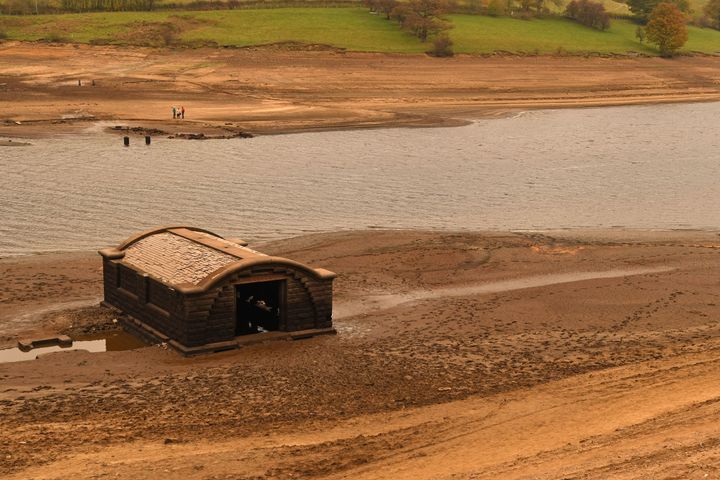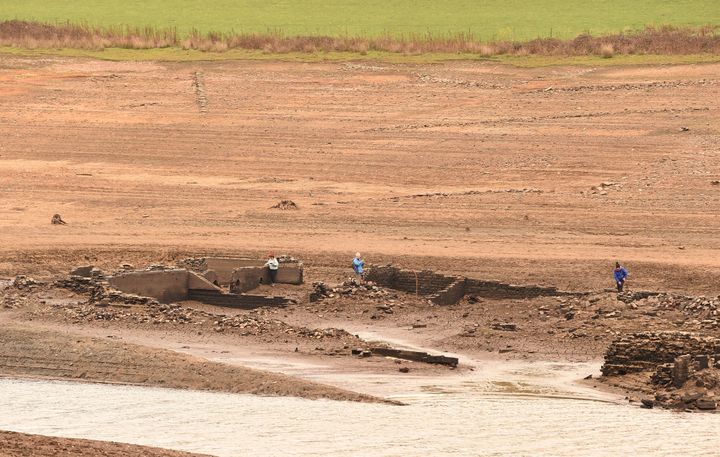
Two abandoned villages deliberately flooded in 1943 to make way for the Ladybower reservoir have been revealed by low water levels.
Derwent and Ashopton, in Derbyshire, were sacrificed to serve the needs of Derby, Sheffield, Nottingham and Leicester.
A church, village hall and a manor house were among the many buildings lost.
The long, hot summer is causing a headache for Severn Trent Water that manages the site but is a boon for sightseers.
A word of warning though if you plan to visit - earlier this month one man became stuck in the deep mud and only after “30 minutes of digging [mountain rescuers were] able to free the gentleman and walk him back to solid ground”.
Dave Aston from the Peak District’s Upper Derwent Visitor Centre, told the BBC: “It is a rare occurrence to see the ruins of Derwent village.
“The long dry spring and summer has lowered the water levels of the reservoir slowly and in the last four weeks the remains have become visible.
“Visitor numbers are soaring because of it. People are walking in the exposed village.”
The ruins have certainly proved popular on Instagram.
A British Pathé film from 1947, four years after Derwent was flooded, showed how receding water levels had revealed the church spire.

